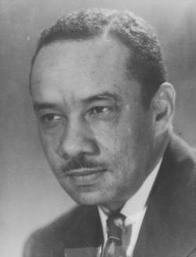So good to see so many aspects of this valuable history being preserved and properly archived. Here is a glimpse into the early thinking of the Black Atlanta college presidents. I admit I feel pleased about the stand taken by my late uncle Harry Richardson. ITC is the Interdenominational Theological Center of which he was the founding president.
Atlanta Student Movement Timeline
Committee on Appeal for Human Rights (COAHR)
1960-1964
by Lonnie King Jr.
Developed for the City of Atlanta Student Movement Commission, 2013
See Atlanta Sit-ins and subsequent articles for background & more information.
See also Atlanta Movement for web links.
February 1, 1960 — Four young students at North Carolina A&T conducted their first sit-in demonstration.
February 3rd, 1960, Lonnie King confers with Joseph Pierce and Julian Bond regarding organizing a Student Movement in the Atlanta University Center. All agree to organize a movement in the Atlanta University Center.
February 5, 1960, first meeting of prospective movement participants met in Sale Hall Annex at Morehouse College. Approximately 15 students attended. The attendees were predominately Morehouse Men, however, James Felder, President of Clark College Student Government attended representing Clark College.
February 12, 1960, Lincoln’s birthday, was set as the date of the first sit-in. Unable to get a sufficient number of students to participate, the initial sit-in was re-scheduled for February 19th.
February 17, 1960, Lonnie King, Julian Bond et al, were summoned to a 3:00 P. M. meeting in the conference room of the Council of College Presidents in Harkness Hall for a meeting with the six college presidents. All college presidents were in attendance, along with elected student government leaders from the six Atlanta University Center schools.
The presidents spoke in turn and expressed their opinions of the proposed sit-in movement which they had heard was forming in Atlanta. Dr. Clement, president of Atlanta University spoke first. He was followed by Dr. Mays of Morehouse, Dr. Manley of Spelman and Dr. Brawley of Clark. All four men discouraged students from participating in the movement. They argued students should focus on their class work and let the NAACP fight the racial battle. However, when Dr. Brawley of Clark spoke, he asserted that he would be embarrassed if the students staged sit-ins in downtown department stores.
The next speaker was Dr. Harry V. Richardson of ITC. He hesitated for approximately 10 seconds before he spoke up. When he did speak, he shocked all by stating that the students were right in challenging segregation directly. He related that he was a highly educated man, president of a college, but because he was a Negro he also could only eat at segregated lunch counters in downtown Atlanta. The next speaker was Dr. Frank Cunningham of Morris Brown College. He strongly backed up Dr. Richardson and re-iterated his support for the student movement that was sweeping the South. These latter comments apparently caught Dr. Clement off guard. However, before he spoke as chairman of the Council, he asked who would speak for the students. At that point, Lonnie King spoke up and argued that the time had come for the Negro community to come together and end segregation in the Atlanta.

 Anita Reynolds, born in 1901 in Chicago, came of age in Los Angeles, California, during the heyday of silent films. She was a smart, clever, and vivacious teenager, who, as she says, early on “relished the role of prima donna.” She and her brother, Sumner, were encouraged in their interest in the arts by their exuberant family, both the bevy of kinfolk in California and the numerous far-flung peripatetic relatives who circled back to visit from time to time. School dropouts and Harvard graduates, their professions ranged from mail sorter at a post office to well-placed member of the foreign service…
Anita Reynolds, born in 1901 in Chicago, came of age in Los Angeles, California, during the heyday of silent films. She was a smart, clever, and vivacious teenager, who, as she says, early on “relished the role of prima donna.” She and her brother, Sumner, were encouraged in their interest in the arts by their exuberant family, both the bevy of kinfolk in California and the numerous far-flung peripatetic relatives who circled back to visit from time to time. School dropouts and Harvard graduates, their professions ranged from mail sorter at a post office to well-placed member of the foreign service…





